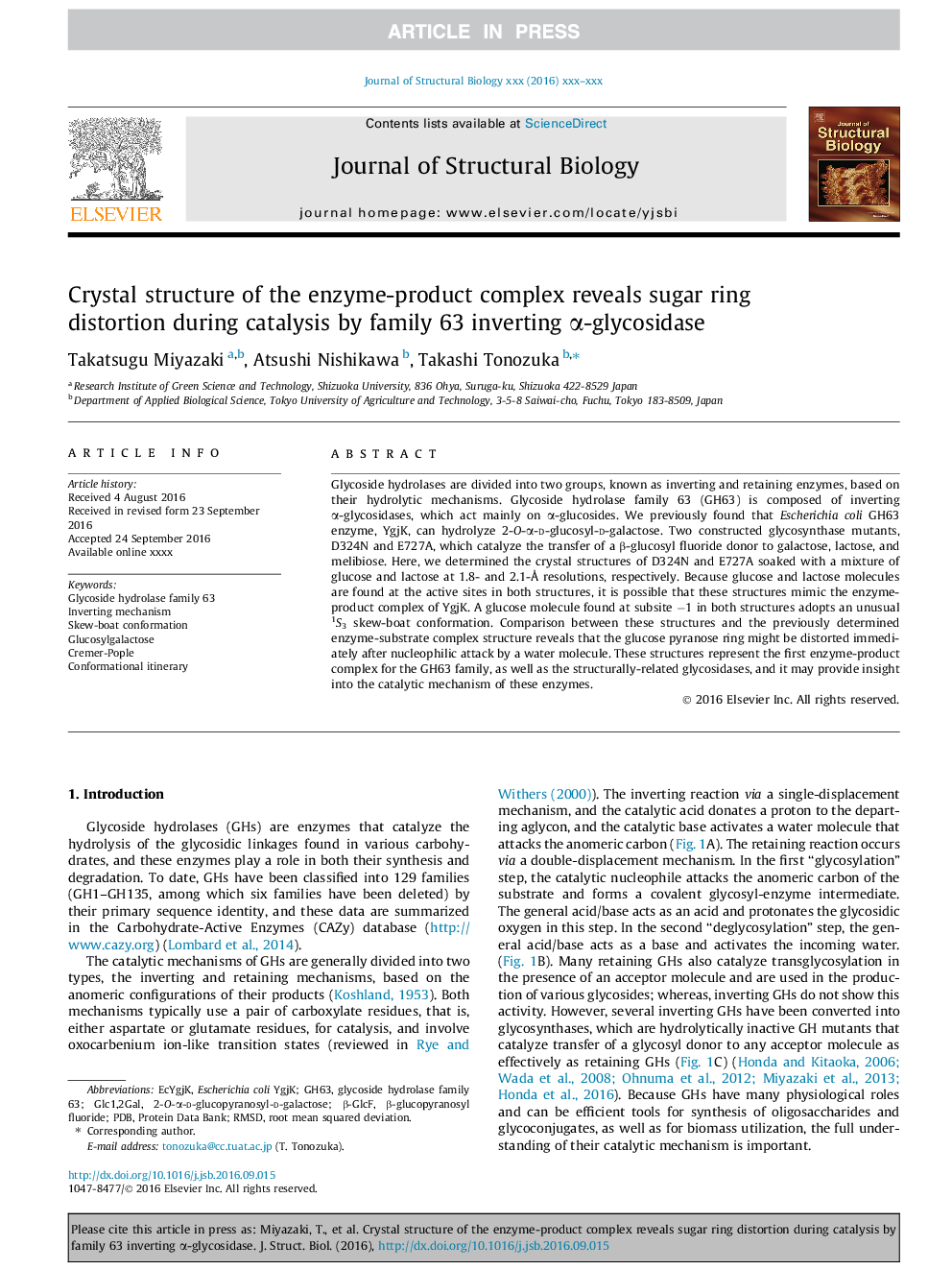| Article ID | Journal | Published Year | Pages | File Type |
|---|---|---|---|---|
| 5591664 | Journal of Structural Biology | 2016 | 8 Pages |
Abstract
Glycoside hydrolases are divided into two groups, known as inverting and retaining enzymes, based on their hydrolytic mechanisms. Glycoside hydrolase family 63 (GH63) is composed of inverting α-glycosidases, which act mainly on α-glucosides. We previously found that Escherichia coli GH63 enzyme, YgjK, can hydrolyze 2-O-α-d-glucosyl-d-galactose. Two constructed glycosynthase mutants, D324N and E727A, which catalyze the transfer of a β-glucosyl fluoride donor to galactose, lactose, and melibiose. Here, we determined the crystal structures of D324N and E727A soaked with a mixture of glucose and lactose at 1.8- and 2.1-Ã
resolutions, respectively. Because glucose and lactose molecules are found at the active sites in both structures, it is possible that these structures mimic the enzyme-product complex of YgjK. A glucose molecule found at subsite â1 in both structures adopts an unusual 1S3 skew-boat conformation. Comparison between these structures and the previously determined enzyme-substrate complex structure reveals that the glucose pyranose ring might be distorted immediately after nucleophilic attack by a water molecule. These structures represent the first enzyme-product complex for the GH63 family, as well as the structurally-related glycosidases, and it may provide insight into the catalytic mechanism of these enzymes.
Related Topics
Life Sciences
Biochemistry, Genetics and Molecular Biology
Molecular Biology
Authors
Takatsugu Miyazaki, Atsushi Nishikawa, Takashi Tonozuka,
